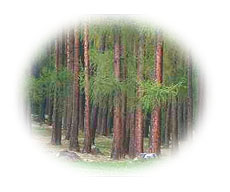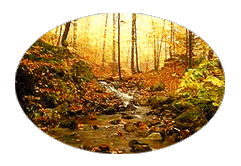|
Caring for the Land
|

|
|
Land conservancies are the fastest-growing segment of the environmental movements in the US and Canada, reflecting an increasing willingness on the part of many to take direct responsibility for caring for the natural world. For example, in British Columbia where I live, the number of local land trusts has increased from six in 1994 to over 40 in 1999. Similar expansion is taking place elsewhere. While recent growth has been explosive, the land trust movement is not a recent phenomenon. Al least since the 19th century, the preservation of wilderness and the encouragement of land stewardship have involved both the public sector and the non-profit community. Leadership in the private conservancy movement was first provided by a group of American women who created the Mount Vernon Ladies' Association of the Union to purchase and protect George Washington's home in 1858, pre-dating the American National Park Service by 58 years 1. Their effort involved both preservation (of an historical monument) and stewardship of the estate for the benefit of future generations. Public stewardship in Canada began with the creation of Parks Canada in 1885. Private stewardship began in Britain with the creation of the National Trust in 1895. Another early private stewardship initiative was the Society for the Preservation of New Hampshire Forests, founded in 1901, four years before the creation of America's national forests.
In encouraging land stewardship, the conservancy movement is allied with other groups -- organic farming, ecoforestry, naturalists, fish and game groups -- as well as with government programs aimed at protecting fish habitat, forests, and other natural resources. While some stewardship decisions rest with the private landholder, many depend on government policies which can encourage or discourage responsible land use. What Does Land Stewardship Have To Do With Ecopsychology? Voluntary land stewardship will only take place if the landholder has a psychological and spiritual connection to the land. There is a need to make friends with the plants and animals with whom we share our land. There is a need to see that every act on our land affects the plants and animals who live downstream. There is a need to see that we are only temporary landholders and that future generations of all life will be affected by the actions we take or don't take today. These are the visions of both ecopsychology and the ethics of land stewardship. Many rural landholders -- farmers, forest owners, forest rangers, park wardens, indigenous people, rural residents -- have an intimate and emotional connection to the land they occupy. For urbanites and those new to the countryside, there is a need, using Gary Snyder's word, to "reinhabit" the land 2. One task of an applied ecopsychology is to help us acquire the sense of place and interconnectedness that will lead us to become good stewards of the land. Another task of ecopsychology is to encourage the stewardship activities that will strengthen our sense of place. Some deep ecology writers and some Biblical sources have given the word "stewardship" some undeserved negative connotations. Much as we may value pristine wilderness, huge areas of the earth's surface are used by humans for housing, food production, forestry, or mining. These activities (except possibly mining) are essential for human welfare and survival but we have choices -- they can be done in ways that are more or less sensitive to ecological values and other living things.
How to be a Land Steward Each of us can learn about, love, and care for the place where we live. As we learn to be supportive members of our biological community we increasingly derive strength and support from that community. Organic farming and gardening, natural and wildlife-friendly landscaping, composting, runoff control, and many other individual actions can show that we are caring members of the biological community with whom we share our land. These are all profoundly spiritual as well as practical activities. Besides caring for land of our own we can support or create community stewardship initiatives. A day spent restoring damaged landscape is a benefit to wildlife and it is a benefit to us, allowing us to make contact with the land as a participant in the web of life and not just as a user or an observer. A donation of time or money to a land trust or conservancy strengthens our connection to our human and biological communities and enables these organizations to remove aspects of the natural world from the marketplace. By connecting us in love to our home places, land stewardship enables us to integrate the benefits of ecopsychology into our daily lives while integrating our lives into the greater life that supports us. REFERENCES
|
 The concept of preservation is sometimes controversial,
but it is simple and easy to understand -- setting land
aside for the exclusive use of wild nature. Land
stewardship is more complex. The concept rests on
the recognition that caring for working landscapes may be
as important for wild nature as preserving
pristine wilderness. Land stewardship refers to the
human use of land in ways that preserve its value for
future generations, take account of the needs of
non-human land users, and minimize harmful downstream
or atmospheric effects. Each of us has the opportunity to
be good stewards of any land we use or occupy.
The concept of preservation is sometimes controversial,
but it is simple and easy to understand -- setting land
aside for the exclusive use of wild nature. Land
stewardship is more complex. The concept rests on
the recognition that caring for working landscapes may be
as important for wild nature as preserving
pristine wilderness. Land stewardship refers to the
human use of land in ways that preserve its value for
future generations, take account of the needs of
non-human land users, and minimize harmful downstream
or atmospheric effects. Each of us has the opportunity to
be good stewards of any land we use or occupy.
 In addition to reducing negative environmental impacts
of human activities, there are ecopsychological and
spiritual benefits to be gained in being a land
steward. Elan Shapiro has written that
"environmental restoration work can spontaneously
engender deep and lasting changes in people."
In addition to reducing negative environmental impacts
of human activities, there are ecopsychological and
spiritual benefits to be gained in being a land
steward. Elan Shapiro has written that
"environmental restoration work can spontaneously
engender deep and lasting changes in people."